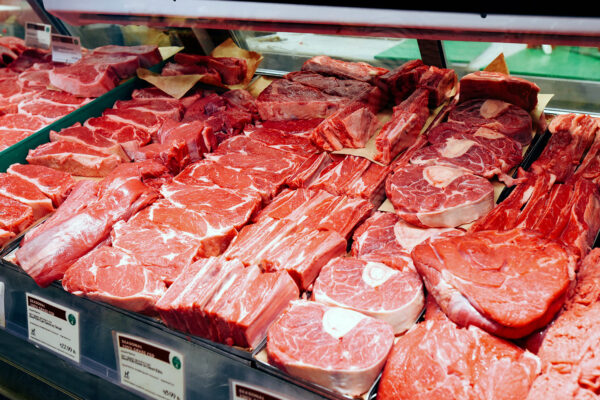
Increases in the sale of plant-based meat substitutes aren’t leading to one-on-one reductions in meat consumption.
Studies in the Netherlands and the United Kingdom found that meat consumption is falling slower than the rise of vegetarians and “flexitarians” would suggest. Which puts a heavier burden on farmers to cut emissions from animal agriculture.
Netherlands has most flexitarians
44 percent of the Dutch (claim to) eat meat daily, down from 50 percent three years ago. The average Dutch person consumes 98 grams of meat per day, down 8 percent in ten years. Plant-based dairy and meat substitutes have become relatively cheaper as a result of high animal feed and energy prices caused by the war in Ukraine. (Ukrainian cereals are fed to European livestock. Natural gas is used to synthesize fertilizer.)
The Netherlands has the highest share of self-described flexitarians in the EU: 42 percent compared to an average of 30 percent. An earlier poll found that 9 percent of the Dutch have given up meat altogether, which is similar to the rate in the UK. Yet meat sales remain high.
Dutch are big on milk
So is Dutch dairy production. The country is the fifth-largest producer in the EU, although it virtually shares third place with Poland and the UK. All three countries produce around 15 million tonnes of milk per year. Only France and Germany produce substantially more: 25 and 33 million tonnes, respectively.
Half of Dutch milk is used to make cheese and three-quarters is exported, but the Dutch are big on cheese and milk themselves, consuming 350 grams of dairy per day, which is almost a world record. (We haven’t beaten the Finns.)
British eat like it’s the 1980s
British meat consumption has fallen faster, by 17 percent in a decade. That has brought the average down to where it was in the 1980s: 86 grams per day.
Dutch and British food authorities recommend against eating more 70 grams of meat daily.
In early 2021, scientists ran a campaign to boost the sale of plant-based substitutes in British supermarkets. They introduced price parity, placed vegan products at eye level and added posters that encouraged shoppers to try them. It worked in the short term: sales of plant-based products rose 57 percent. And it had a long-term effect: sales remained 15 percent higher after the experiment.
But sales of animal meat did not decrease.
The trend is the same in the United States: many consumers are adding plant-based products to their diets, not replacing dairy and meat.
Livestock farming contributes to global warming
Meat is a valuable source of iron, protein and other nutrients, like vitamin B12 and zinc. But most can also be found in fish and vegetables while eating too much — especially processed and red — meats can cause bowel cancer, heart disease and stroke.
Meat production is also a major contributor to climate change. In the EU, agriculture accounts for 11 percent of greenhouse gas emissions; primarily methane and nitrous oxide from livestock farming.
Emissions fell in the 1990s and early 2000s, but have since been stable. Farmers have become more efficient: emissions per liter of dairy and kilogram of meat have decreased. That has been offset by increases in total production since the abolition of EU quotas.
The European Environment Agency projects that without changes in diet and policy, greenhouse gas emissions from agriculture will fall only 1.5 percent by 2040.
Should farmers be the only ones to change?
There are many tweaks farmers can make:
- Optimizing livestock diets by recycling human food waste and introducing genetically modified animal feed that lowers emissions from digestion and manure;
- Improving manure management, for example by capturing and recycling ammonia emissions;
- Using biogas to heat greenhouses;
- Switching from artificial to organic fertilizers: not just manure, but everything from minerals to seaweed extracts to recycled human waste; and
- Sequestering carbon emissions through agroforestry and by using cover crops and conserving organic soils.
All require investment, regulatory reform or upskilling — or all three. All put the burden on farmers to change. When it’s the simplest thing for consumers to reduce their meat intake by a quarter (for the British) or a third (for the Dutch) and still get the nutrients they need.
